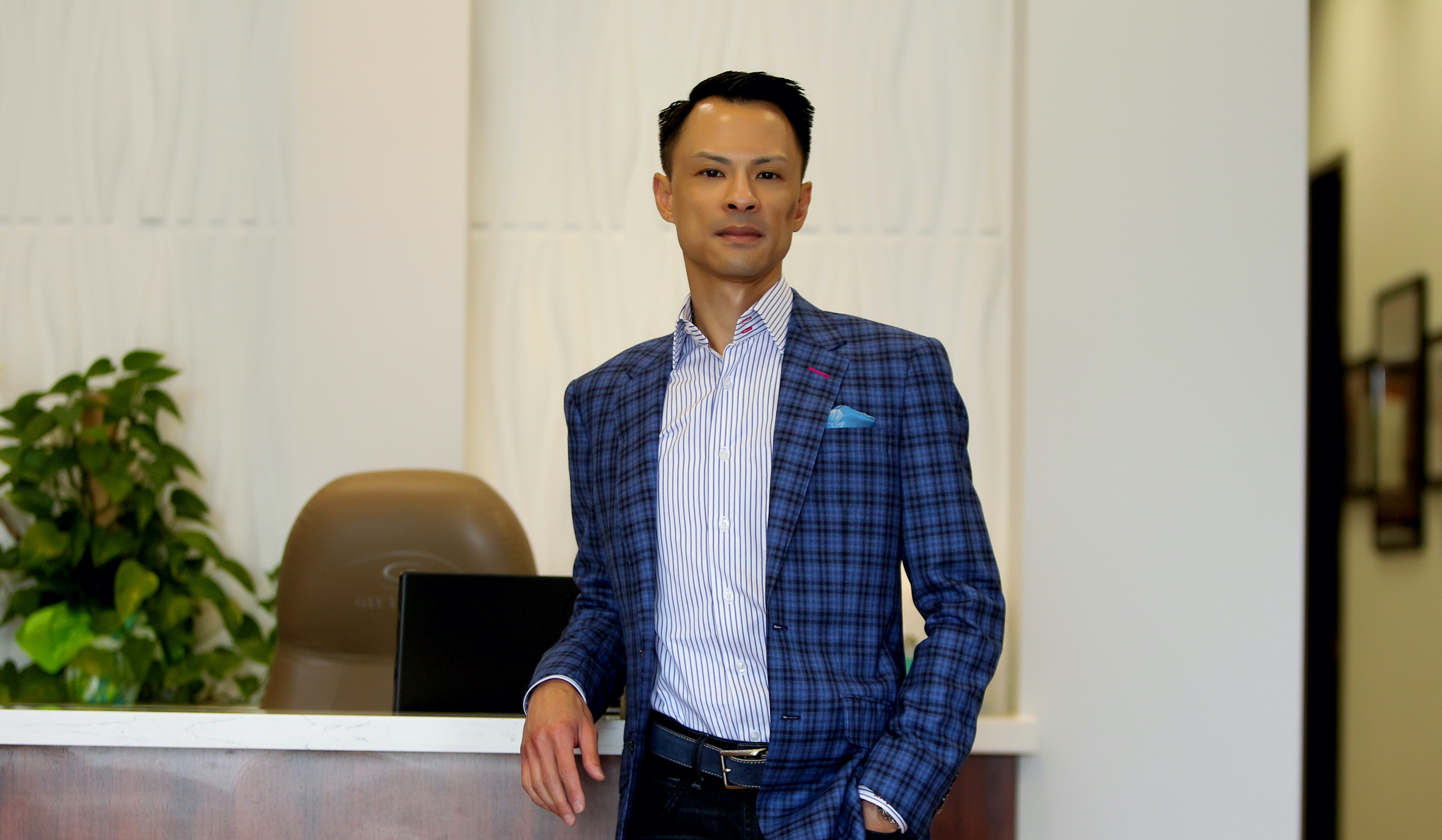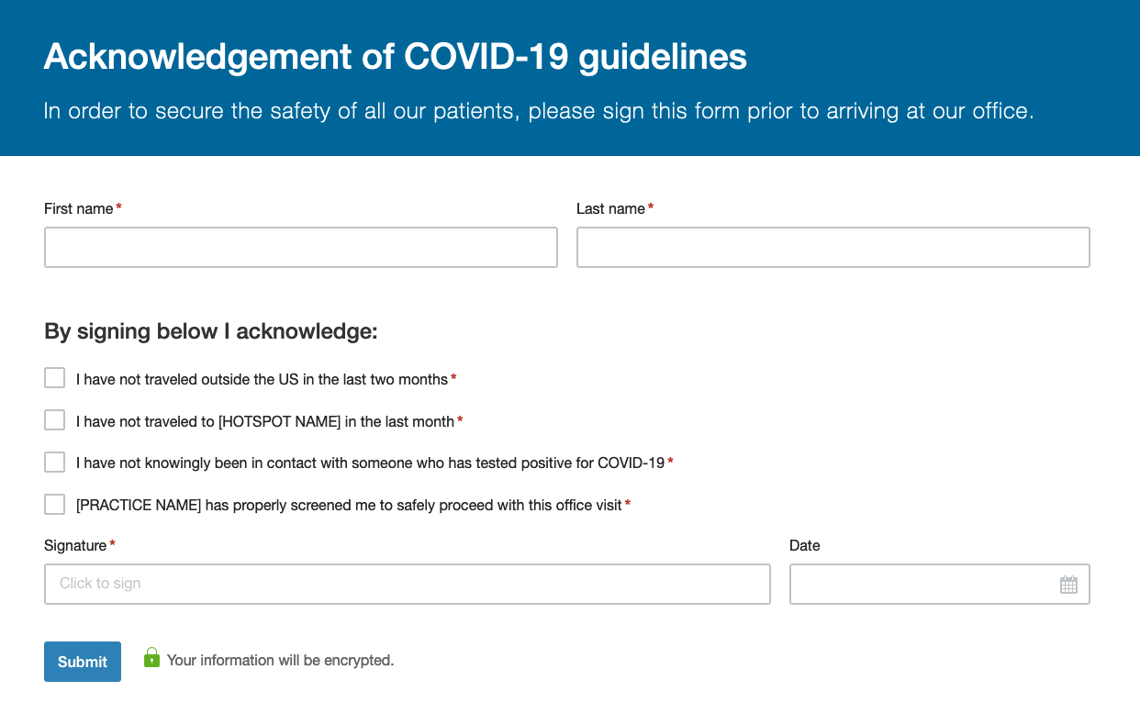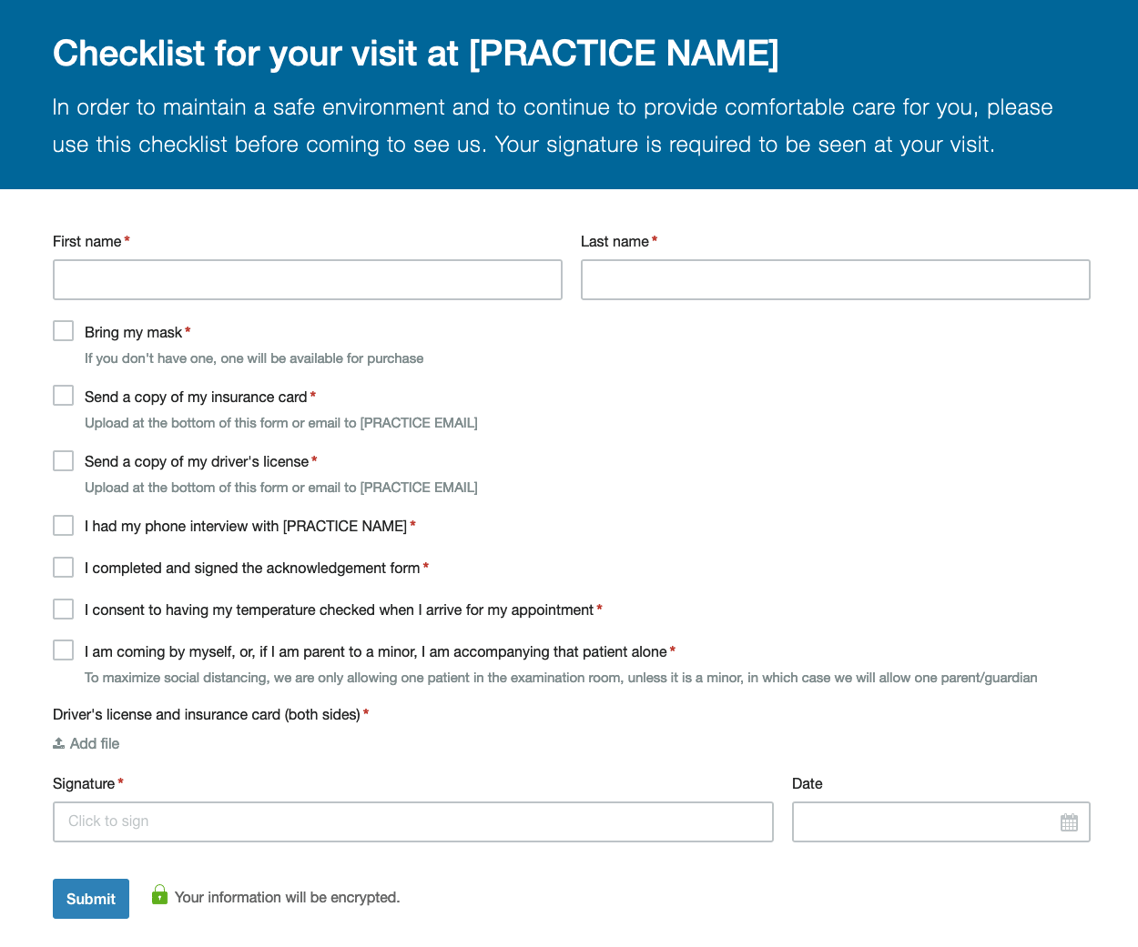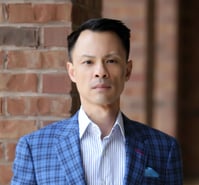Customer success story: improving efficiency during a pandemic

Whether you have a therapy, dental, chiropractic, optometry, or other healthcare practice, the past six months have required you to harness all of your skills to adapt to rapid change.
From the call to shut down practices to a gradual reopening to our current state of learning to function in the “new normal,” we can all appreciate the need for best practices that we can rely on during the pandemic.
One of the best ways to develop these new practices is to listen to colleagues and discover what’s working for them.
Last month we presented the success story of Dr. Neil Gajjar, a dentist in Mississauga, Ontario.
This month we’re presenting the success story of Dr. Kevin L. Gee, an optometrist in Missouri City, Texas.
Meet Kevin L. Gee, OD, FAAO
|
After graduating from optometry school, Dr. Gee was appointed Assistant Clinical Professor of Surgery at the Texas A&M College of Medicine and Senior Staff Physician at Scott & White Memorial Hospital in Temple, Texas. In 2010, he was honored by the American Optometric Association with the appointment to the Meetings Center Executive Committee, and he served in that capacity until 2017. Dr. Gee served as President of the Texas Optometric Association in 2013 and served as Consulting Past President in 2015. In 2011 Dr. Gee completed and successfully passed the American Board of Optometry Board Certification examination and now is distinguished as a Diplomate of the American Board of Optometry. He is a Fellow of the American Academy of Optometry and was a former board member of the local optometric society. |
Two months closed
We shut down our practice in March, except for emergency cases. During this time, it was important that our patients felt they were still connected with us. I knew communication would be key! We used an automated response on our phones to inform them that our practice was closed, and messages were rerouted to my Hushmail inbox, so I was always apprised of their needs and could respond promptly. This was a confusing time for everyone, and we figured that reliable communication would be an important component in helping our patients feel safe.
Because the future was uncertain, we sent out a newsletter encouraging our contact lens wearers to contact me if they had less than a three month supply. Within 18 hours, we filled 45 orders! Rebates, receipts, other documents were easily sent securely back and forth with Hushmail.
How we reopened
We reopened on May 20 after two days of staff orientation and deep office cleaning. We waited until clear CDC guidelines for reopening were published, set to work following those, and added some of our own.
Here are some of the precautionary measures we put in place:
- Temperature screenings would be required for everyone before their shifts and for every person that comes into the office
- Everyone would wear a mask – a respirator mask in front of patients and polypropylene lined cloth masks when on the phone
- We would all wear scrubs – clean sets every day and office-issued shoes we leave at the office
- We have five strategically-placed air filtration units throughout the office.
We also used two web forms to safely welcome patients for their appointments:
Acknowledgement of COVID-19 guidelines
This form allows patients to acknowledge that they haven’t traveled to a hotspot and haven’t come in contact with anyone who is COVID-19 positive. This form is updated as guidelines concerning COVID-19 change.

This form is modeled on the informed consent form Dr. Gee uses in his practice.
Checklist for your visit
This form helps us ensure that our patients are ready for their appointment, informing them of the need for a mask (and of the opportunity to purchase one), the necessity to arrive alone (minors may bring one parent), and acquiring their consent to have their temperature checked when they come in the door. This form, coupled with a phone interview, allows us to get all of the “paperwork” out of the way upfront so when a patient arrives, they are escorted right in to their appointment.

This form is modeled on the appointment checklist Dr. Gee uses in his practice.
For more information about how we reopened and the technology and procedures we’re using, visit us on our Facebook page @GeeEyeCare.
Maintaining flexibility during uncertain times
One of the biggest challenges in the weeks and months ahead will be adjusting our procedures as the situation changes. For example, it’s important that our web forms are easy to edit because hotspots and other recommendations change. If cases begin to surge, we will want to have our patients complete the checklist the day before, or even the day of, the appointment.
It’s always important when managing a practice to stay abreast of industry changes, but now those changes come quickly and are difficult to foresee. It’s necessary to do our best to look ahead and put plans in place in case x, y, or z occurs, but also to be ready to handle the unpredictable.
There’s a silver lining
Change can be good! I’ve heard from numerous colleagues that the pandemic has forced them to become more efficient than ever. For us, it was implementing phone interviews.
My team conducts the patient history over the phone prior to each patients’ visit. They are recorded, and I listen to them. Just when we thought we couldn’t get any more efficient, we are learning better ways.
- This phone conversation allows patients to access their medications (strength and dosage) as well as their contact lens information at home when they may not have brought it with them to their visit.
- Having the patient’s information ahead of time helps streamline the visit. There’s no check-in, and patients are brought directly to the examination room.
- My review ahead of time has helped me get a better grasp on how my team is doing with their conversation skills, charting and also helps in my understanding of each patients’ needs and wants for the examination. This is quickly revisited by me with the patient in person.
3 recommendations for the times ahead
I’ve learned a lot in the last three months. If anyone were to ask me what they could do to manage their practice in this unprecedented time, I would tell them three things:
- The goal is always to protect patients. Yes, you also want to protect your staff and yourself, but when any healthcare worker chooses their career, it’s with the acknowledgment that the patient comes first.
- Masks are essential! It’s one thing we can all do to mitigate the risk. Don’t be afraid to reschedule a patient because they refuse to wear one.
- Be careful about staying focused on the bottom line; that can make you lose sight of what’s important – quality care for your patients. Do the right thing, take care of your patients, and the practice will take care of itself.
Want to start using web forms to reopen your practice today?
|
From the call to shut down practices to a gradual reopening to our current state of learning to function in the “new normal,” we can all appreciate the need for best practices that we can rely on during the pandemic. One of the best ways to develop these new practices is to listen to colleagues and discover what’s working for them. In this post, we’re presenting the case study of Dr. Kevin Gee, an optometrist in Missouri City, Texas. Related posts: |
Overwhelmed by the business side of private practice? In this guide, therapists share 20 ways they've offloaded what drains them, to create more space for the work they love.

 Dr. Kevin L. Gee, OD, FAAO, is a native Houstonian who graduated from the University of Houston with a Bachelor of Science in Biology in 1998. He earned his Doctor of Optometry degree from the University of Houston College of Optometry in 2002.
Dr. Kevin L. Gee, OD, FAAO, is a native Houstonian who graduated from the University of Houston with a Bachelor of Science in Biology in 1998. He earned his Doctor of Optometry degree from the University of Houston College of Optometry in 2002.
.jpg?noresize&width=460&name=%E2%80%9CThank%20goodness%20Hushmail%20is%20so%20easy%20to%20use.%20I%20don%E2%80%99t%20have%20to%20learn%20a%20lot%2c%20and%20that%E2%80%99s%20a%20relief%20when%20there%20are%20so%20many%20other%20things%20to%20think%20about%20right%20now.%E2%80%9D(1).jpg)

